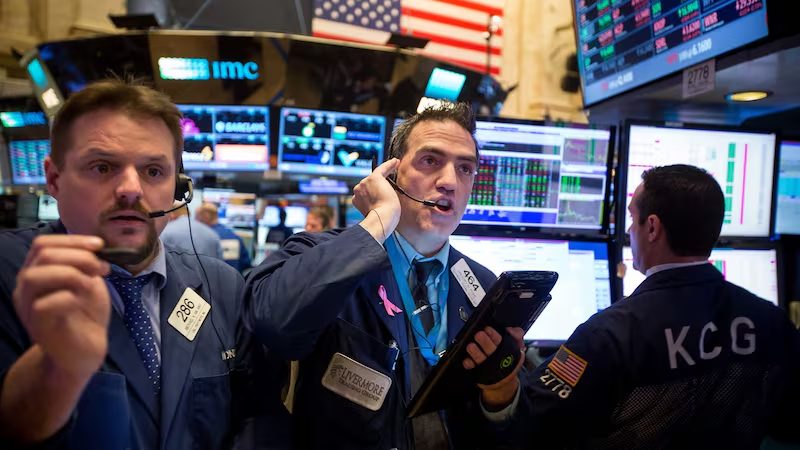S&P 500 eyes all-time highs after rebound Investors won't forget the first quarter of 2016 in a hurry. After enduring its worst-ever start to a year, the S&P 500 came roaring back to somehow register a quarterly gain, one that puts it within touching distance of May's all-time highs.
The fact it’s been so long since new highs were registered means many are iffy as to whether the seven-year bull market is still intact but a long pause is less unusual than one might think.
There have been seven bull markets that endured longer pauses than the current one, according to a Bloomberg piece last week; in fact, long trading ranges resembling the current one have occurred in three out of every five bull markets, with stocks eventually registering average gains of 24 per cent the following year.

Nevertheless, making new highs will not be easy. The index is now facing major technical resistance: between June and December, the S&P 500 rallied to within touching distance of May’s highs on five occasions, only to be rebuffed every time.
The key concern has been valuation. Stocks’ valuation multiple has expanded by 60 per cent since 2011, Goldman Sachs noted recently, but that expansion process has stalled. Equities trade on 17 times forward estimates, well above five- and 10-year averages, and investors have continually refused to pay more.
Improving sentiment has taken the market this far but the next hurdle looks like a trickier one to clear. Crucial earnings season One way of clearing that aforementioned hurdle would be if stocks enjoyed a decent earnings season. We'll know soon enough, with Alcoa's report kicking things off next week.
Some upside is possible, given the current low expectations – profits are expected to fall by 8.7 per cent, according to FactSet, but the usual Wall Street game of “under-promise and over-deliver” means most companies will beat lowballed estimates.
Additionally, rising oil prices will help the beleaguered energy sector, which has accounted for the bulk of the earnings shortfall, while the weakening dollar will also boost companies’ bottom line.
To bulls, the current environment has echoes of last October, when dovish Federal Reserve messages combined with low profits expectations fuelled a furious earnings season rally.
There is one crucial difference, however; stocks have bounced in advance of earnings this time around. Companies will beat estimates but results are still likely to be ugly, with seven of the S&P’s 10 sectors expected to report year-over-year declines in profits.
As mentioned earlier, stocks are trading at the top of their valuation range, despite being on the verge of reporting four consecutive quarters of earnings declines.
In the circumstances, a better-than-expected earnings season may not prove enough to ignite another relief rally. Cheap Europe gets cheaper European stocks have participated in the global rebound, but not enough to prevent a first-quarter decline of 8 per cent.
Among the 19 Euro Stoxx 600 sectors, 18 fell in what was the index’s worst first quarter since the dark days of 2009.
It wasn’t meant to be like this.
After years of underperformance, European stocks finally outperformed the United States last year and that was forecast to continue in 2016, with Europe the favoured pick among strategists and global fund managers at the start of the year.
Saying Europe is cheap in relative terms may be scant consolation to investors who have been hearing that message for years now but it bears repeating.
Wealth of Common Sense blogger Ben Carlson noted last week that the US has outperformed Europe by an "unprecedented" 9.5 percentage points annually over the last five years.
Some of that differential relates to dollar gains against the euro, but the gap remains wide and seemingly unsustainable.
The cycle will turn eventually.
However, with the VStoxx, Europe’s volatility index, last week hitting its highest level since August relative to its US equivalent, patience may be required for some time yet.
Short sellers fuel market rally Buying from short sellers forced to close losing positions has helped lift equities since February, but short interest remains higher than it was in 2009, according to Fundstrat Global Advisors' Thomas Lee.
Lee found nine previous occasions where short positioning resembled the current environment. Six months later, stocks were higher on eight occasions, enjoying a median bounce of 12.1 per cent.
The short squeeze, it seems, might not be over yet.













